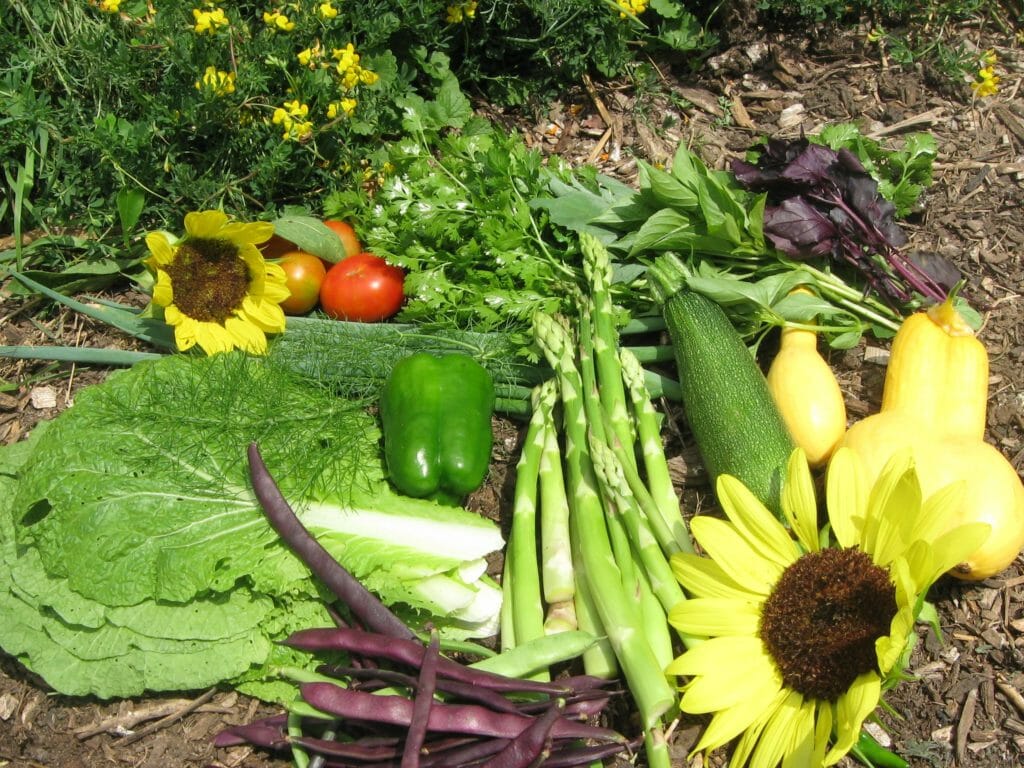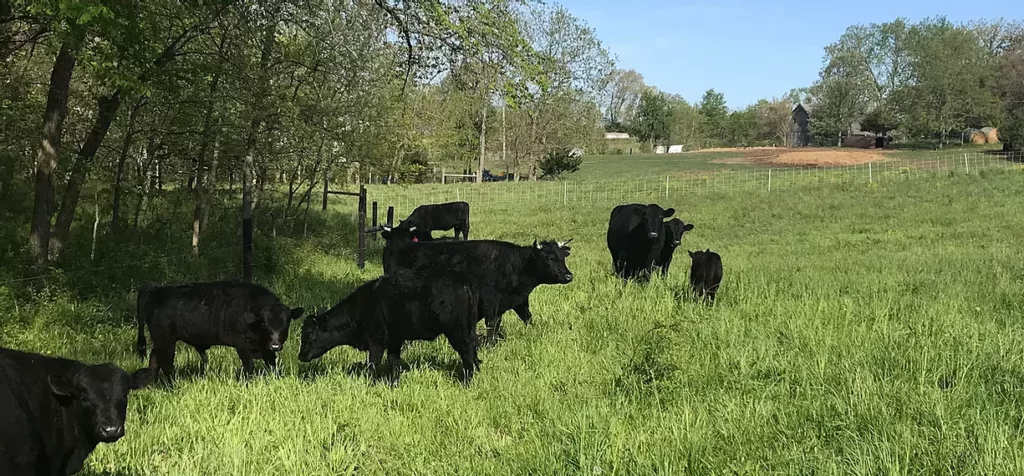Vote With Your Wallet to Support Local Food
Buy nutrient-dense food from local farms to invest in healthy and vibrant communities.
“What are your thoughts on Bitcoin?”
What??? That’s an odd way to start a conversation, but if you knew my friend Kyle*, you wouldn’t be surprised. Hesees the world a little, um, differently. He reads books on advanced math and investing for fun. To relax.
“What do you mean?” I asked.
“What do you think about investing in Bitcoin?”
“Well, I’m going to follow the advice of (author and financial counselor) Dave Ramsey and say don’t invest in anything you don’t understand. And I don’t know how Bitcoin works.”
“Hmm, that’s actually pretty good advice.”
That conversation got me thinking. What do I feel is a good investment? What is something that I spend money on now that will pay long-term dividends?
When I look at our household budget, I see that my wife and I spend the most (aside from our mortgage) on things that affect our health. Our number one expenditure?
Food. I don’t mean buying “better” potato chips, or “healthier” cookies. I mean eating real food. Food that is chock full of flavor, and nutrients. Food that leads to better health. Food that doesn’t have a label. But how do you know if it’s healthy when it doesn’t have a label? The USDA periodically publishes “Nutritive Value of Foods” charts listing the amounts of vitamins and minerals found in fruits, vegetables, meats (and processed foods). But there’s a problem. In 2018 the Bionutrient Food Association found that a spinach leaf grown on one farm could have between 1/4 and 1/14 as many nutrients as a spinach leaf grown on a different farm! What this really means is that the USDA’s published values for nutrient levels in fruits and vegetables cannot guarantee that you’re getting the nutrition you think you are.
How can you know what you’re really getting? While I do like my vegetables, I have no intention (nor the stomach capacity!) of eating four to fourteen times as many servings in a day to make sure I’m getting the recommended daily allowance of a specific nutrient. I certainly can’t afford to send a sample of everything I eat to a lab to see what it has in it, nor do I expect the broccoli or brussels sprouts would still be edible by the time the results came back.
We currently have two ways to know the nutrient value of our food.
Grow it yourself. Of course, you would know exactly how your food was grown, what you did or didn’t put in the soil, on the plant or in the animal’s feed (if you consume animal products). You could tailor your food production to match your tastes, beliefs and nutritional demands. But that’s not possible for everyone, due to limitations in space, budget, time etc. Your other option is:
Know your farmer. By having a personal connection to the farm that grows your food, you can find out the specifics of how the food was produced. You can select a farmer who takes care of the soil, plants and animals in a way that provides a quality product and simultaneously reduces or eliminates the need for toxic herbicides and pesticides.
So what does it take to grow nutrient-dense food? According to dairy nutritionist, farmer, author and soil consultant Gary Zimmer, you should consider three properties of the soil to determine its health: the chemical, biological, and physical.
Chemical refers to the mineral composition of the soil. This includes not only the amounts, but also the ratios of calcium, magnesium, phosphorus and many other soil-born nutrients. Too much or too little of one element can affect the growth of plants directly, or can “tie up” other nutrients, making them unavailable to the plant, even though they may be present in adequate amounts. Dr. William Albrecht, Ph.D., of the Department of Soils at the University of Missouri from1916 to 1959, determined the “ideal” ratios of soil nutrients through extensive lab and field testing. Plants grown on soils that were closer to this ideal ratio had higher nutrient levels and greater natural resistance to insect attack, and animals that consumed crops grown on those soils grew faster while eating less than the control groups, had greater bone density, higher fertility and fewer health problems. Dr. Weston Price, DDS, found similar correlations between nutrient intake and health in human cultures around the world. Other researchers have found that many plants considered as “weeds” prefer soils with specific mineral imbalances, so getting soil minerals in line can also reduce the need for chemical weed control.
Biological means the bacteria, fungi, bugs, worms and microscopic creatures that are found in the soil. Plant roots are more efficient at absorbing nutrients when they come in contact with symbiotic microbes in the soil. Many farmers focus on the creatures that injure or kill their crops, but instead of trying to kill them with pesticides and fungicides (-cide refers to anything designed to kill something), improving soil conditions to support beneficial microbes and insects can also reduce the need for chemical controls, as they simply outcompete the pest organisms. While working in India in the early 1900’s, British mycologist Sir Albert Howard observed that cotton fields tended by British farmers were struck by certain fungal diseases, while cotton grown in adjacent fields by the native farmers were immune to these same diseases. Sir Howard’s investigation into this phenomenon determined that the natives routinely applied compost to their fields, and they had a very specific recipe and method for making this compost. Sir Howard found that by replicating this system of compost-making, he could also produce crops that were unaffected by fungal diseases. He took this a step further, and grew crops for livestock feed using this same type of compost. The cattle that ate these crops showed no signs of illness even after repeated direct contact with animals infected with highly contagious diseases.
Physical properties of the soil refer to the “pore spaces,” the voids between soil particles that allow air and water to penetrate down to plant roots. Most people know that plants need the right amount of moisture around the roots, but they also need the right amount of air for gas exchange. The beneficial microbes mentioned above take in oxygen and give off carbon dioxide. Without adequate air in the soil, these microbes eventually die off, and they are replaced by anaerobic microbes (those which don’t require oxygen to live), who weaken the plant by producing methane and alcohols.
“Wait,” you say. “This blog is supposed to be about food policy. You just told us you would invest in healthy food, and you gave us a basic science lesson on the soil’s impact on plant, animal and human health. What does this have to do with local food policy?”
I’m glad you asked. The criteria listed above has shaped how my wife and I determine production methods for the food that we raise for our family and our customers. Our own local food policy, if you will. I believe in most cases politics lag behind changing trends in public opinion. The best way to move forward is to purchase products from a local farmer or farmers who are trying to improve the nutritional quality of the food they grow. Then share that food with family, friends and neighbors(and your local politicians!). Educate them about the benefits to the local economy, the environment and their own health. We can all benefit from personally investing in more nutrient-dense food. Will you join me?
*Name has been changed to protect the identity of my friend. I don’t want anyone to misjudge him based on my opinion!
**If any of my comments left you feeling confused, angry, or just plain curious, I highly recommend the following resources for further study:
The Albrecht Papers (8 volumes!!!) by Dr. William Albrecht
The Other Side of the Fence, short film by Dr. William Albrecht
The Soil and Health by Sir Albert Howard
The Biological Farmer by Gary Zimmer
Bionutrient Food Association https://bionutrient.org
Weston A. Price Foundation https://www.westonaprice.org
Price-Pottenger Nutrition Foundation https://price-pottenger.org




